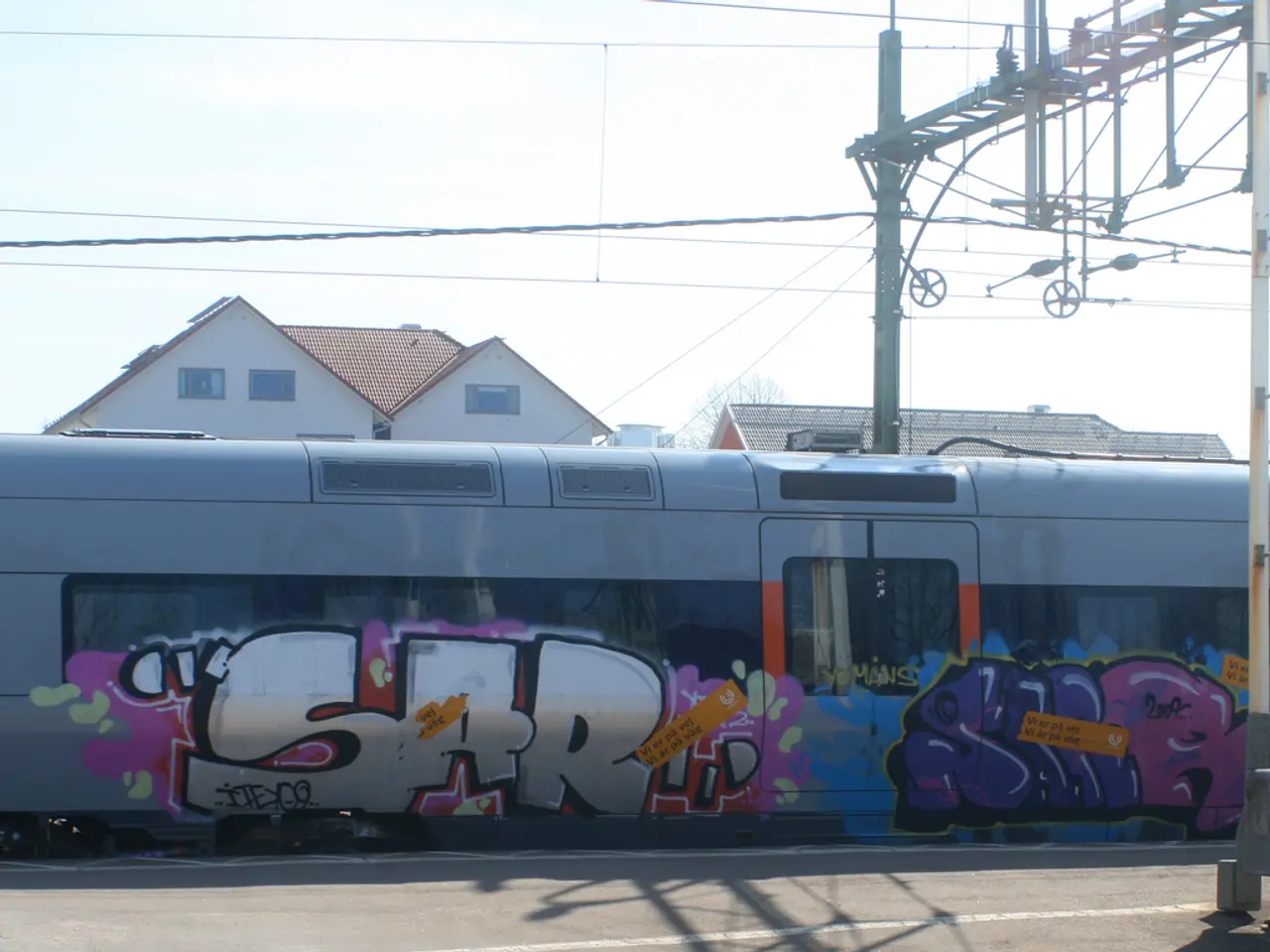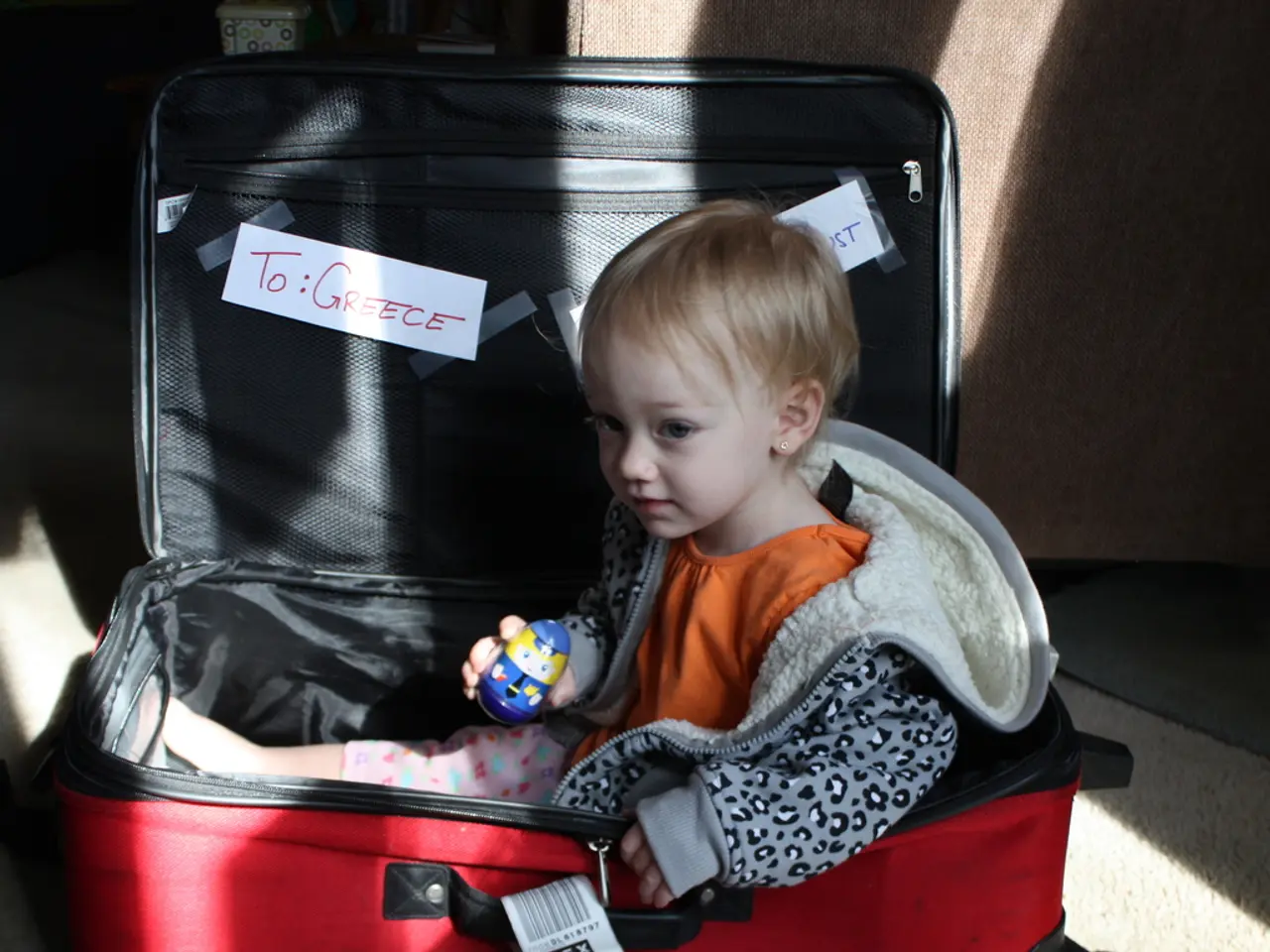Persistent copper thefts: Be prepared for delays on the road
A recent surge in copper thefts across Germany has raised concerns about the security of critical infrastructure and the growing involvement of organized crime groups in the illicit trade of valuable commodities.
In the Stade district, thieves have been actively targeting buildings, stealing four meters of copper downspouts from a snack bar and a nine-meter-long gutter and a five-meter-long downspout from the annex of the Harsefeld town hall over the past week. The police in the district have reported a clear increase in such cases, with organized gangs, suspected to be from Eastern Europe, being behind the thefts.
Similarly, in Glinde (Stormarn district), thieves made off with expensive copper-containing fast-charging cables from two electric vehicle charging stations over the weekend. These thefts are part of a series of similar cases currently being investigated by the criminal police in the south of the republic.
The trend of copper thefts is observed nationwide, although no valid figures are available yet. However, the economic incentive for these crimes is clear. With copper prices reaching near-record highs, the metal can be quickly sold on illicit markets or recycled for substantial profits. This economic driver has led to a near doubling of metal theft incidents in some regions, as reported for supply chain theft activities where metals—including copper—showed a 96% year-over-year increase in thefts during the second quarter of 2025.
The methods employed by these organized crime groups are increasingly sophisticated. Thefts from electricity substations, railway tracks, construction sites, and cell towers are common, with operations often conducted at night or with insider assistance to gain access and avoid detection. Special tools and vehicles are used to quickly dismantle and transport copper wiring or equipment.
The scale and sophistication of these copper thefts suggest involvement by organized crime groups, with operations often spanning multiple countries. These groups leverage networks to move stolen copper through black markets or abroad, sometimes linked to larger criminal activities including cargo theft and cybercrime.
In response to this growing issue, Germany is taking steps to combat copper thefts. Enhanced security measures, surveillance technology deployments, and cooperation with law enforcement across borders are being implemented to protect critical infrastructure. However, the transnational nature of these crimes makes them challenging to tackle. When not caught in the act, these gangs are difficult for investigators to catch.
One of the most spectacular cases of copper theft nationwide occurred at the Schemelsberg tunnel on the B39, where a large quantity of copper was stolen. The stolen copper is quickly sold and brings in quick money, making it a lucrative target for these criminal groups.
The current commodity price for copper is around 8,500 euros per tonne, according to boerse.de. This high value, combined with the ease of resale, makes copper an attractive target for organized crime groups.
In summary, the rise in copper thefts in Germany is driven by high commodity prices, organized criminal networks employing efficient theft methods, and the lucrative resale value of copper. This represents a critical security and economic challenge with clear links to broader patterns of organized crime exploiting supply chains for high-value commodities.
In Stade, the repair of the affected locations is expected to take weeks, affecting a primary school, a sports club in Horneburg, and a stonemasonry business. Witnesses have informed the police, who have taken over the case. The police are checking for connections to other cases, including those in the Stade and Stormarn districts.
As the fight against copper thefts continues, it is crucial for law enforcement agencies to collaborate and share information to effectively combat this transnational crime.
The theft of copper downspouts and gutters from buildings in Stade and Glinde districts, coupled with the stolen fast-charging cables from electric vehicle charging stations, are examples of the nationwide trend of copper thefts. These crimes are driven by the high commodity price of copper, which currently stands at around 8,500 euros per tonne, and the lucrative resale value of this metal on illicit markets. Given the transnational nature of these crimes and the involvement of organized crime groups, it is essential for law enforcement agencies to collaborate and share information to effectively combat this phenomenon.




